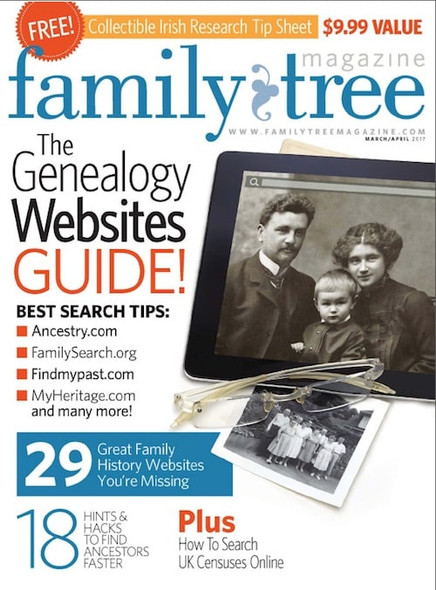Description
Ancestry.com Web GuideBy Diane HaddadAncestry.com is home to the largest online commercial collection of genealogy records. Our cheat sheet guide will help you make the most of this huge genealogy resource, including:
View AllClose
- A step-by-step guide to navigating the website
- Search strategies
- Major records collections and holdings
- Membership options
- Handy shortcuts
- And more
- A step-by-step guide to navigating the website
- Search strategies
- Major records collections and holdings
- Membership options
- Handy shortcuts
- And more
- A step-by-step guide to navigating the website
- Search strategies
- Major records collections and holdings
- Handy shortcuts
- And more
- A step-by-step guide to navigating the website
- Search strategies
- Major records collections and holdings
- Handy shortcuts
- And more
- step-by-step guide to navigating the website/li>
- Search strategies
- Major records collections and holdings
- Membership options
- Handy shortcuts
- And more
- A step-by-step guide to navigating the website
- Search strategies
- Major records collections and holdings
- Membership options
- Handy shortcuts
- And more
- A step-by-step guide to navigating the website
- Search strategies
- Major records collections and holdings
- Handy shortcuts
- And more
- A step-by-step guide to navigating the website
- Search strategies
- Major records collections and holdings
- Membership options
- Handy shortcuts
- And more
- A step-by-step guide to navigating online book collections
- Search strategies
- Major collections and holdings
- Handy shortcuts
- And more
- A step-by-step guide to navigating online newspaper collections
- Search strategies
- Major collections and holdings
- Handy shortcuts
- And more
- A step-by-step guide to navigating library catalogs
- Search strategies
- Major collections and holdings
- Handy shortcuts
- And more
- A graphic guide to navigating EllisIsland.org
- Search strategies
- A timeline
- Handy shortcuts
- And more
- Popular arrival ports
- NARA’s immigration record holdings
- Search strategies
- Handy shortcuts
- A passenger list search worksheet
- And more




